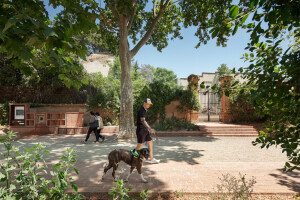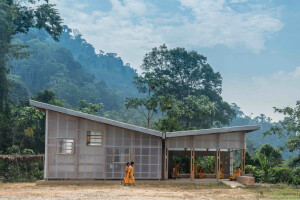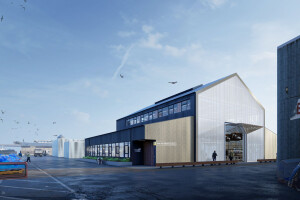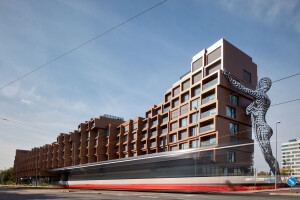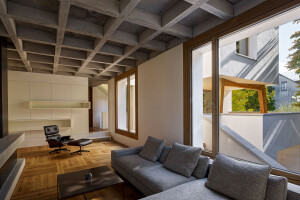Students, researchers and professors of KIT Karlsruhe, together with the architects’ office 2hs, realized this circular pavilion from recycling materials at the Federal Garden Show 2019 in Heilbronn. The ‘Mehr.WERT.Pavillon’ is part of the so-called ‘Mehr.WERT.Garten’, a partner project of the Ministry of the Environment of Baden-Württemberg with the Entsorgungsbetriebe of the city of Heilbronn. It explores the question how we and future generations can live well and how we can develop our economy positively without consuming any of the scarce resources of our planet.
The pavilion was designed and built by students of the Karlsruhe Institute of Technology (KIT) in collaboration with the professorships for Sustainable Construction (Dirk E. Hebel, Felix Heisel and Karsten Schlesier), Structural Design (Matthias Pfeifer) and Building Technology (Rosemarie Wagner) as well as the office 2hs with Lisa Krämer and Simon Sommer.
The project demonstrates an innovative and sensible use of existing resources. All materials used in the project have already gone through at least one life cycle, either in the same or a different physical form. Materials are utilized in mono-material applications and all connections are designed for disassembly. The project thus makes use of the existing urban mine on the one hand, but at the same time represents a material depot for future constructions after the end of the Federal Garden Show.
Conceptually, the project is based on four material layers: the load-bearing structure is made entirely of steel, most of which comes from a dismantled coal-fired power plant in North Rhine-Westphalia. The façade celebrates recycled glass materials from the glass container, such as glass ceramic or foam glass. The floor areas in the garden and under the pavilion are covered with mineral building rubble, which comes directly or in processed form from recycling yards. The furniture and fixtures are made of recycled plastic materials.
Structure
The re-used steel originates from the Kneppers power plant, which has been dismantled in the meantime. In addition to a detailed visual inspection to determine possible damage to the elements, the steel was examined for various properties. Tests in the laboratories of the KIT Faculty of Architecture (Prof. Pfeifer and Prof. Wagner) and the KIT Testing Institute for Steel, Wood and Stones (VAKA) for tensile strength, elasticity, notched bar impact strength and chemical composition made it possible to make the necessary statements about the material quality.
Façade
The façade mainly shows two different products made of recycled and cullet glass. Magna Glaskeramik is made of 100 percent recycled glass and can be returned to the glass cycle after use. Transparent, green or brown bottle glass is fused into glass ceramic by a sintering process, which preserves the colour and shape of the broken glass and creates a special aesthetic. The second product, foamglass, is also made of recycled glass, which is foamed into a light but stable insulating material by adding gas. Foam glass can be reused after use to make new foam glass.
Floor
The floor combines different mineral materials, set in steel frames as 'fallen leaves' of the tree structure. Concrete and brick fractures in various grain sizes, directly reused clinker bricks and so-called WasteBasedBricks from StoneCycling are used. This small Dutch start-up processes mineral building rubble into new bricks - in the case of the Mehr.WERT pavilion in the varieties Salt&Pepper, Blackpepper and Salami. The area between the leaves is formed as a water-bound area of porcelain quarry. Broken plates and cups from production scrap and recycling yards are ground for this purpose and applied as a pure base layer.
Furniture
The counter and the video pedestal were made by panels from Really., which are made of recycled textile fibres (white cotton and denim jeans). The worktop is made of Blue Dapple, a very hard and durable HDPE panel made by Smile Plastics. The raw material for this is used, collected kitchen cutting boards. The stools and chairs were made by Studio Dirk van der Kooij from plastic household waste using a 3-D printer.























